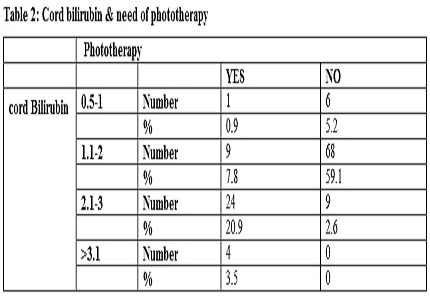Study of clinical profile of vitamin-a deficiency in malnourished children visiting a medical college hospital
Abstract
Introduction: Vitamin A deficiency (VAD) disorders exist as a public health nutrition problem among preschool-aged children in 118 developing countries worldwide, with the South-East Asian Region harboring the maximum number of cases.
Materials and methods: The present study was conducted on 100 children with protein energy malnutrition. Clinical assessment was done by noting the symptoms and ophthalmic signs of vitamin A deficiency in both eyes and classified according to W.H.O. classification.
Results: Majority of the children were below 6 years of age (82%). Pre-school children were affected the most (84.7%). In this study 76% of the children had one or other infections. 52% had infections like respiratory infections (20%), diarrhea (19%), measles (10%) and urinary tract infections (3%). Children with acute infections were found to have severe form of Vitamin A deficiency more often (28.8%). Out of 100 children 17% were grade –I, 23% were grade-II, 32% were grade-III and 28% were grade IV malnourished according to IAP classification. Conjunctival xerosis was the most common sign (45.83%) of all Vitamin A deficiency cases followed by Bitot spots were seen in 30.55% of cases.
Conclusion: Supplementation of the vitamin A rich food to the at risk mothers and children, proper weaning practices, eliminations of infections by immunization, implementation of various nutritional programs and regular deworming will go a long way in prevention of Vitamin A deficiency in children.
Downloads
References
2. Health Dialogue , Vitamin A Boosts Immunity p:6 Dr. Bruno de Benoist describes the link between Vitamin A and infection , issue No.18 Sept 1999.89-95
3. National Nutrition Monitoring Bureau. Diet and nutritional status of population and prevalence of hypertension among adults in rural areas. National Institute of Nutrition, Indian Council of Medical Research. Hyderabad; 2006. Technical Report No: 24
4. National Nutrition Monitoring Bureau. Prevalence of Vitamin A deficiency among pre-school children in rural areas. National Institute of Nutrition, Indian Council of Medical Research. Hyderabad; 2006. Technical Report No: 23
5. Horton S. Opportunities for investments in nutrition in low-income Asia. Asian Dev Rev 1999; 17:246-73.
6. World Health Organization. World Health Report. Reducing Risk, Promoting Healthy Life. Geneva: WHO, 2002: 54-55.
7. Rice AL, West KP jun., Black RE. Vitamin A deficiency. In: Ezzati M, Lopez AD, Rodgers A, Murray CJL, eds. Comparative Quantification of Health Risks: Global and Regional Burden of Disease Attributable to Selected Major Risk Factors. Vol. 1. Geneva: World Health Organization, 2004.
8. Food and Nutrition Board, Institute of Medicine. Dietary Reference Intakes for Vitamin A,Vitamin K, Arsenic, Boron, Chromium, Copper, Iodine, Iron, Manganese, Molybdenum, Nickel, Silicon, Vanadium, and Zinc. Washington, DC: National Academy Press, 2001.
9. Whitcher JP, Srinivasan M, Upadhyay MP. Corneal blindness: a global perspective. Bull World Health Organ. 2001;79(3):214-21. Epub 2003 Jul 7.
10. Sommer A, Davidson FR; Annecy Accords. Assessment and control of vitamin A deficiency: the Annecy Accords. J Nutr. 2002 Sep;132(9 Suppl):2845S-2850S.
11. Glasziou PP, Mackerras DE. Vitamin A supplementation in infectious diseases: a meta-analysis. BMJ. 1993 Feb 6;306(6874):366-70.
12. Hussey GD, Klein M. A randomized, controlled trial of vitamin A in children with severe measles. N Engl J Med. 1990 Jul 19;323(3):160-4.
13. Sommer A, West KP jun. Vitamin A Deficiency: Health, Survival, and Vision. New York: Oxford University Press, 1996.
14. Control of vitamin A deficiency and xerophthalmia Report of a Joint WHO/USA ID/Helen Keller International/IVACG Meeting Geneva, World Health Organization, 1982 (WHO Technical Report Series, No 672)
15.Kapil U. Ethical issues in vitamin A supplementation in India. 7. Indian J Prac Doctor. http://www.indmedica.com/jounals.php/12?journalid=3&issueid=132&articleid=1745&action=article, accessed on December 2, 2012.
16. Kapil U, Sachdev H. National consultation on benefits and safety of administration of vitamin A to pre-school children and pregnant and lactating women. Indian Pediatr. 2001 Jan;38(1):37-42.
17. Akhtar S, Ahmed A, Randhawa MA, Atukorala S, Arlappa N, Ismail T, Ali Z. Prevalence of vitamin A deficiency in South Asia: causes, outcomes, and possible remedies. J Health Popul Nutr. 2013 Dec;31(4):413-23.
18. Nambiar VS. Vitamin A deficiency and anemia: alarming public health problems among the tribal Rathwa adolescents of Chhota Udaipur, Gujarat, western India: a crosssectional study. Int J Med Sci Public Health 2015; 4:1504-1512.
19. Satish D. Ashtekar, Suresh K. Kumbhar, Dawary Bhagavan, Renuka S. Ashtekar: Study of vitamin A deficiency among primary school going children under two PHCs of Sangli District in Maharashtra. International J. of Healthcare and Biomedical Research, Volume: 2, Issue: 4, July 2014, Pages 151-157.

Copyright (c) 2016 Author (s). Published by Siddharth Health Research and Social Welfare Society

This work is licensed under a Creative Commons Attribution 4.0 International License.


 OAI - Open Archives Initiative
OAI - Open Archives Initiative


